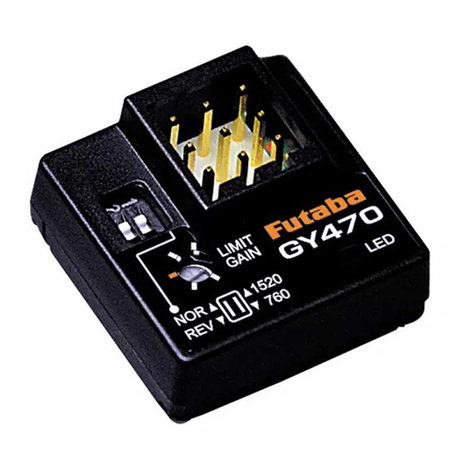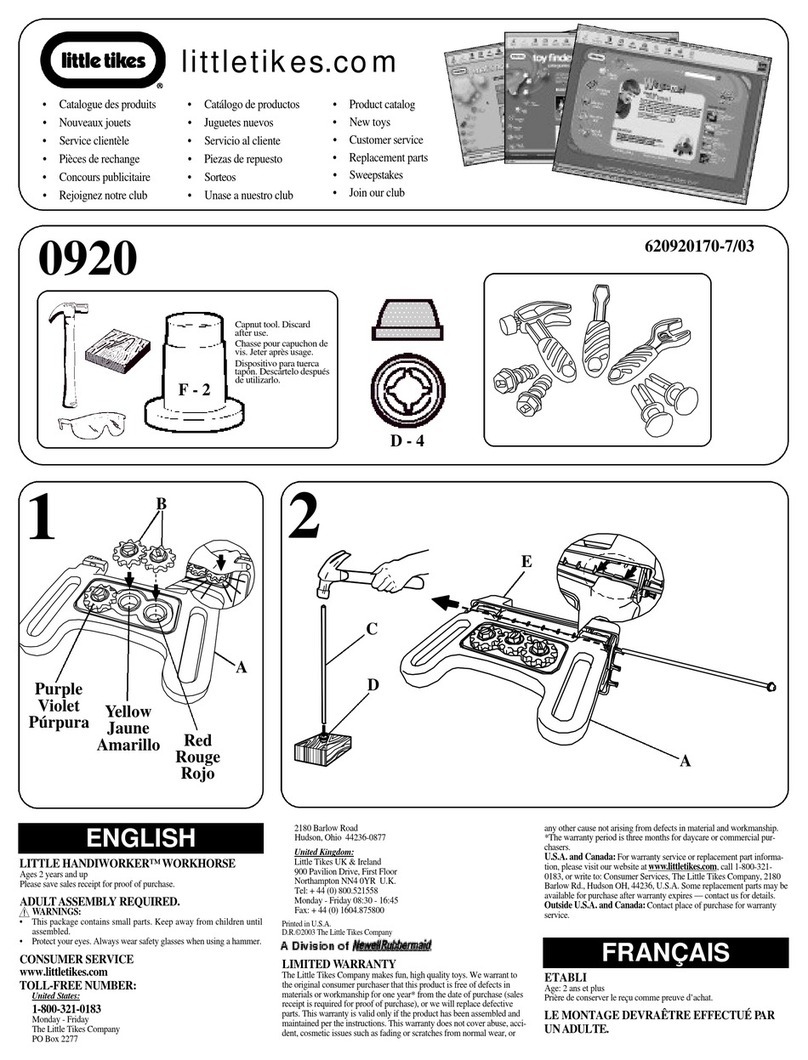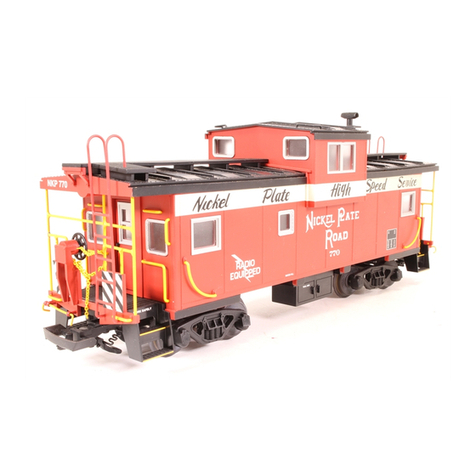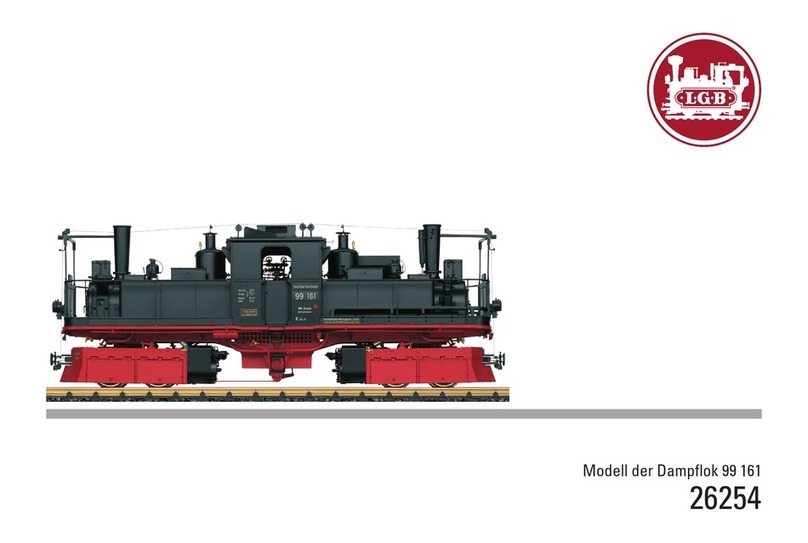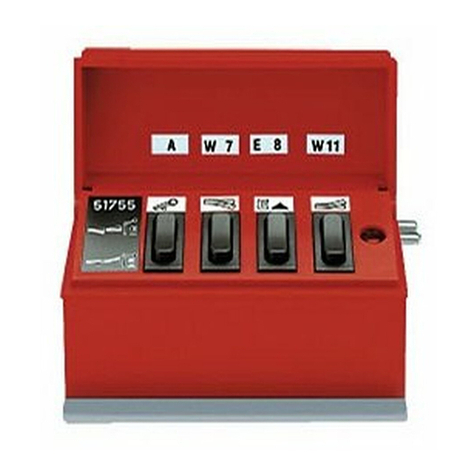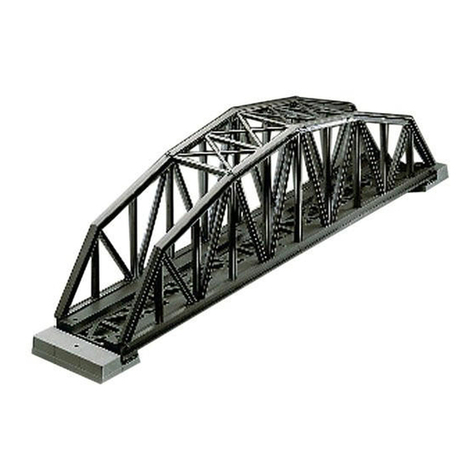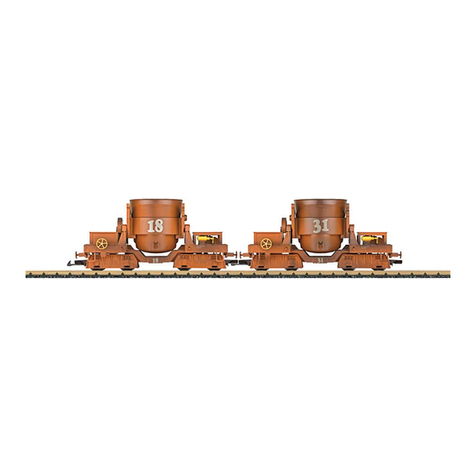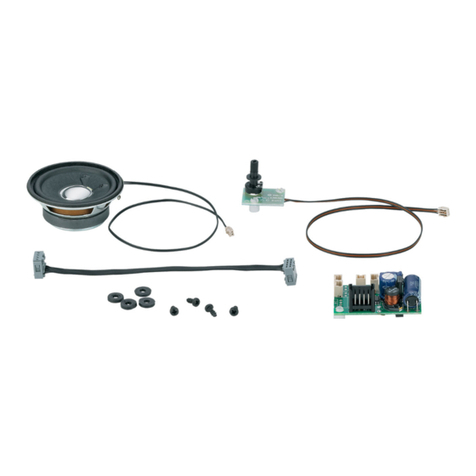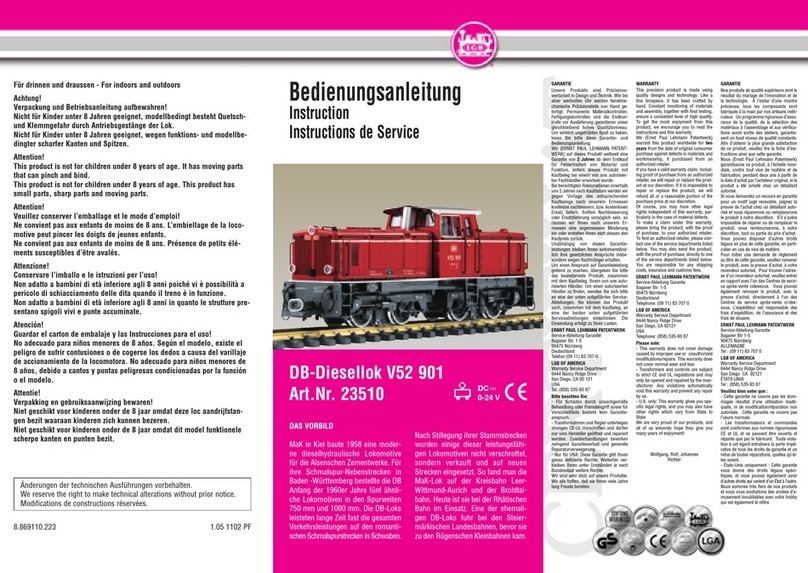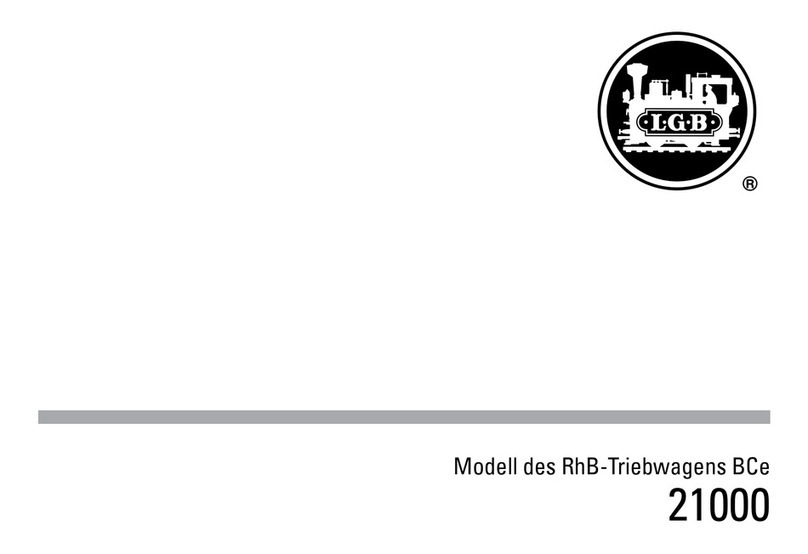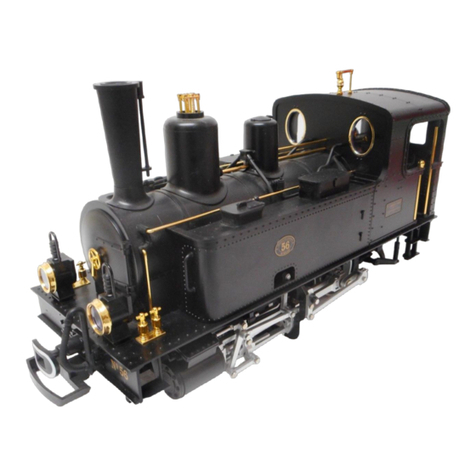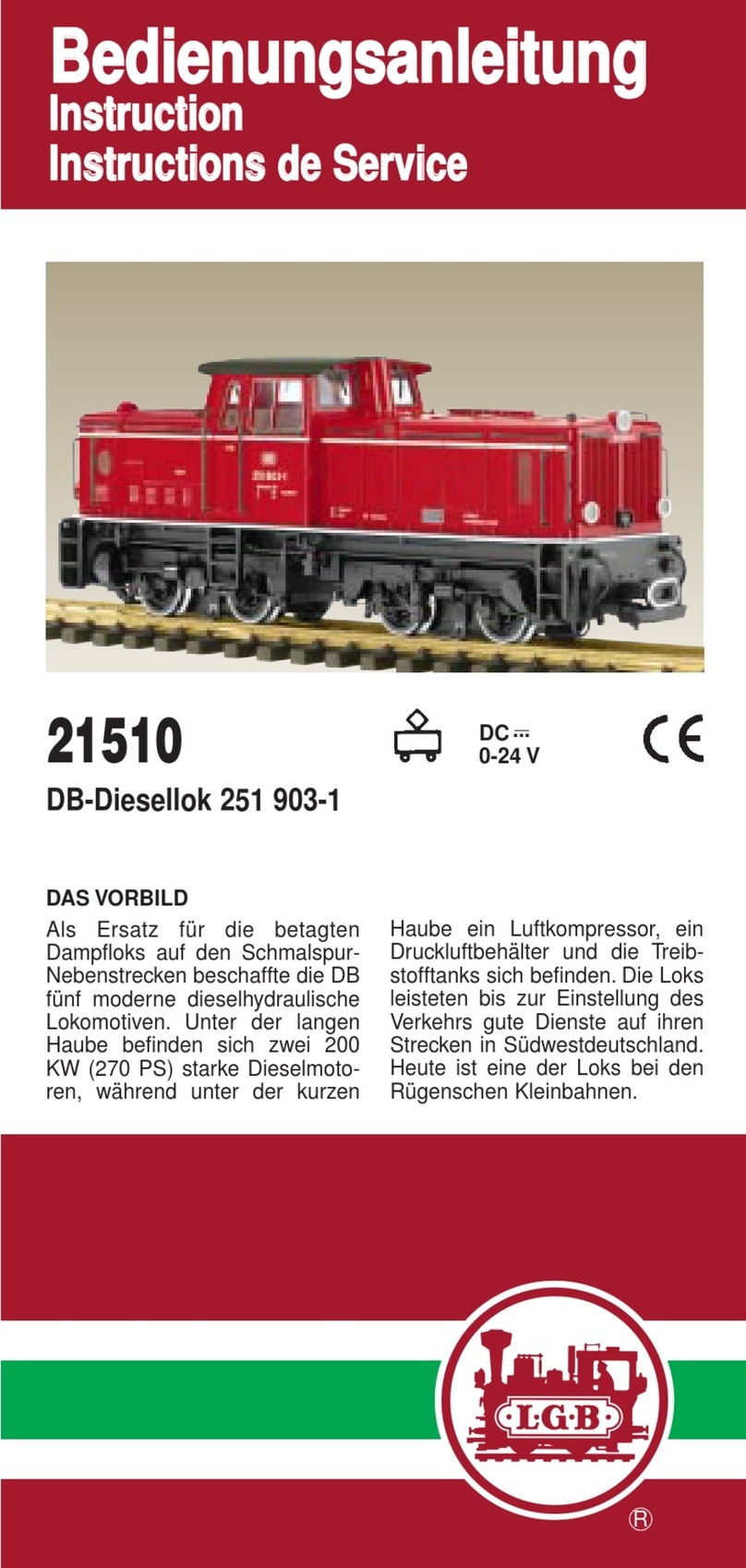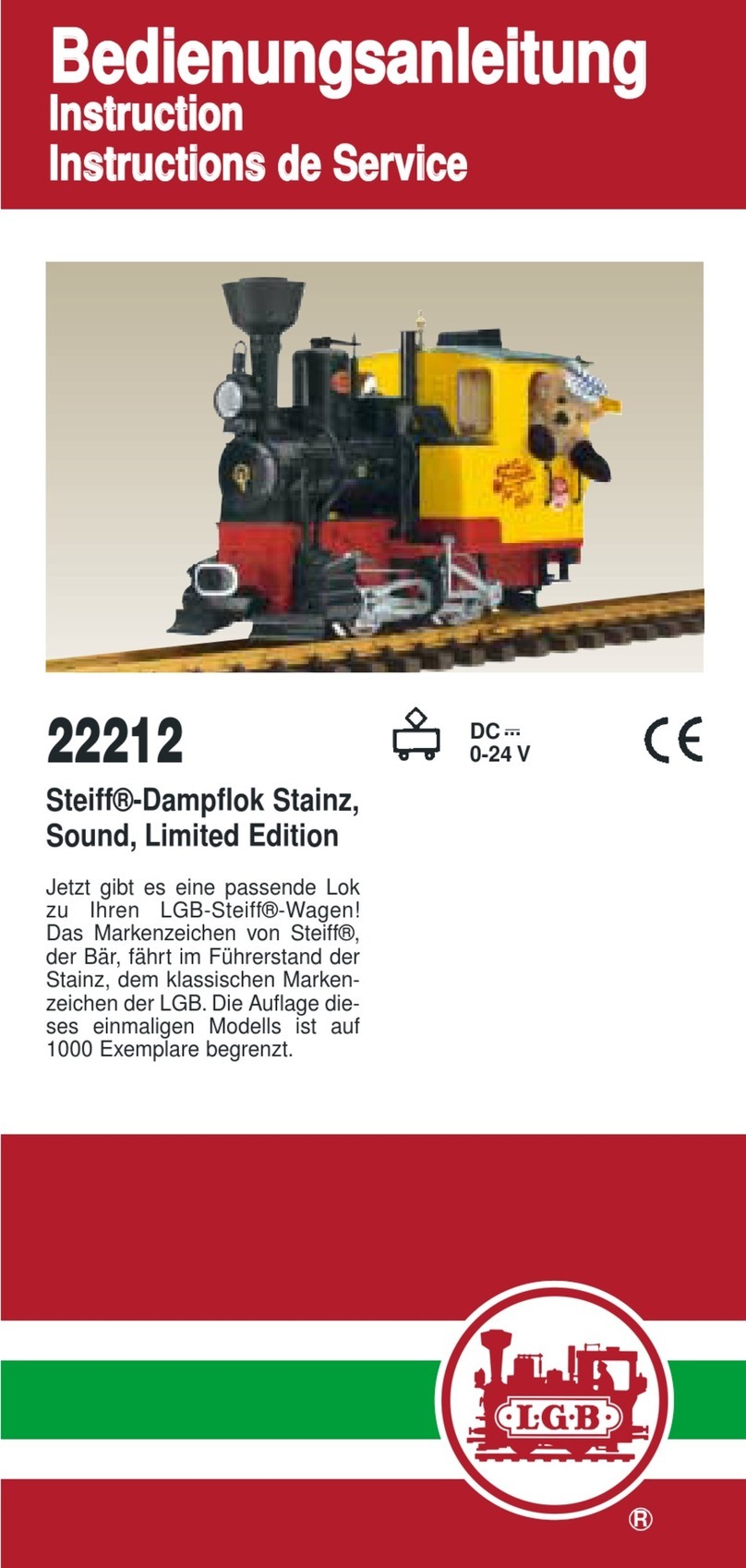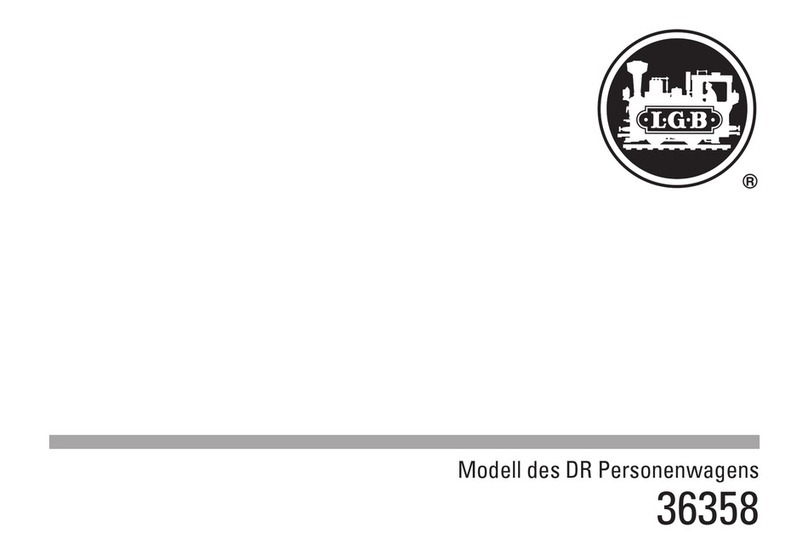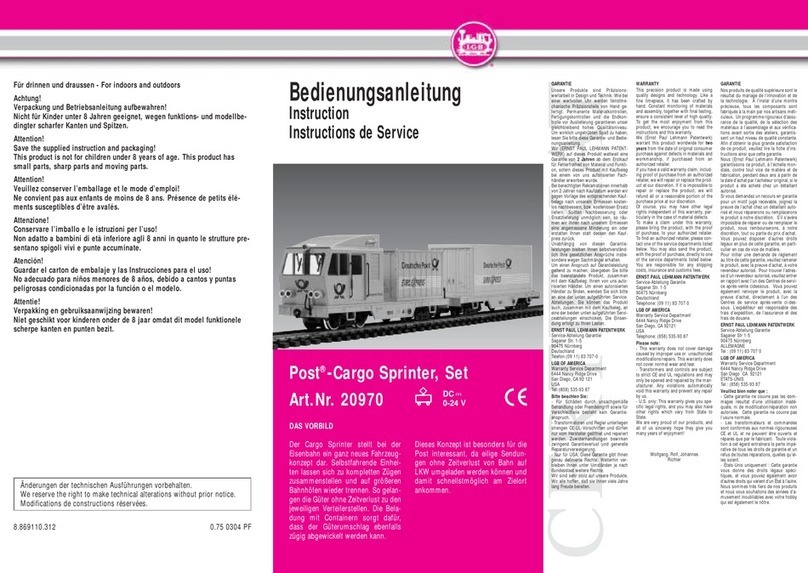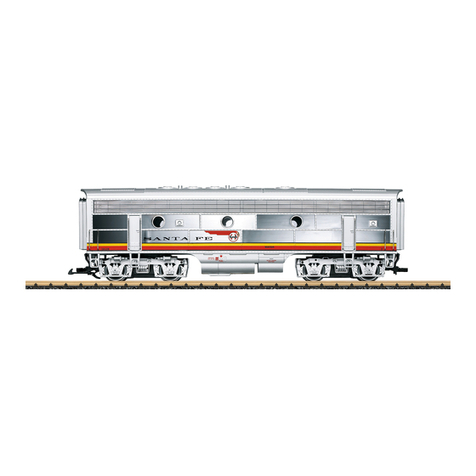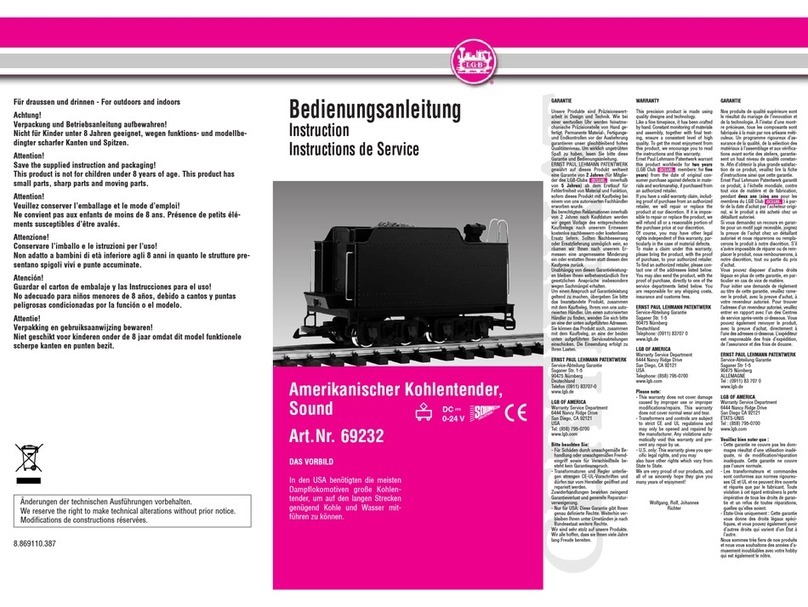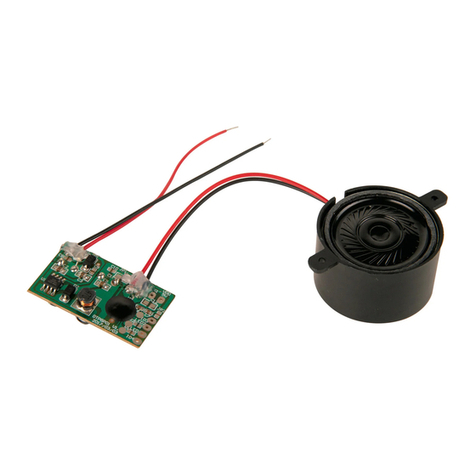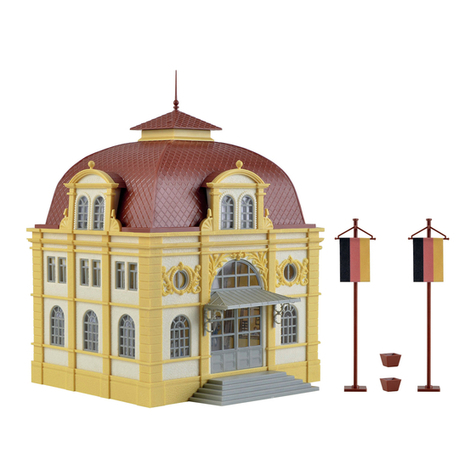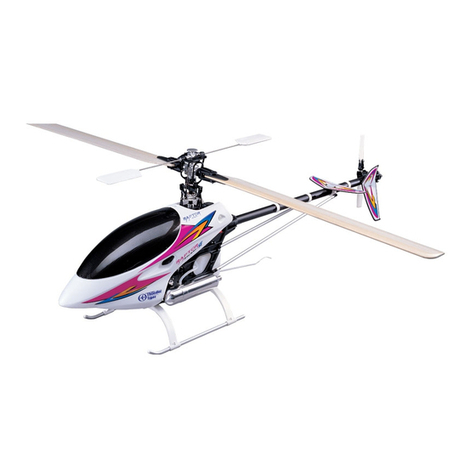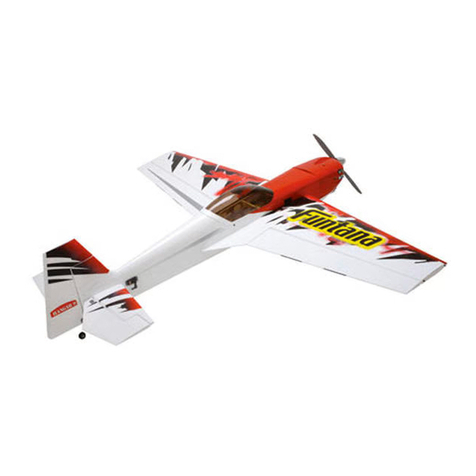
8
Remarques sur la sécurité
• Utiliser uniquement des convertisseurs et transforma-
teurs correspondant à la tension du secteur local.
• Pour le raccordement du dispositif de commande,
utilisez un câble d’une coupe transversale d’au moins
0,5 mm2(par ex., LGB 50160)
• En cas de surcharge ou de court-circuit, débranchez
immédiatement le câble de distribution du transfor-
mateur de la prise électrique. Corrigez l’erreur et
réutilisez ensuite le régulateur de marche.
• ATTENTION! Pointes et bords coupants lors du fonc-
tionnement du produit.
Information importante
• La notice d‘utilisation fait partie intégrante du produit
; donc être conservée et, le cas échéant, transmise
avec le produit.
• Elimination : www.maerklin.com/en/imprint.html
Caractéristiques
• Tension à l’entrée :
15 –18 V tension alternative ou
16 – 24 V tension continue
comme 51090 ou 66367 (Märklin).
• Tension de sortie : max. 24 V tension continue
• Courant de sortie : max. 5 A courant continu
• Courant de traction : 5 A max. avec redresseur de
courant intégré
Montage, mécanique
52120:
Le dispositif de commande 52120 peut être installé à
l’intérieur ou dans un réseau de jardin.
52121:
Le dispositif de commande électronique est entre autres
conçu pour le montage dans des pupitres de commande.
Ce dispositif est monté de la manière suivante:
1. Percez un trou (diamètre d’au moins 6,5 mm) pour
l’axe de réglage. Otez le bouton de réglage et
l’échelle de réglage en tirant vers le haut.
2. Percez deux trous pour les vis de fixation. Insérez
le dispositif de commande par le bas en le faisant
passer par le trou prévu pour l’axe de réglage. Fixez le
par le haut avec deux vis M3.
Attention ! Les vis ne doivent pas dépasser de plus de
4 mm de la partie inférieure de la tôle de refroidisse-
ment. Dans le cas contraire ou si elles appuient sur la
platine, celle-ci sera endommagée.
3. Collez l’échelle de réglage sur la partie avant du pu-
pitre de commande et remontez le bouton de réglage
sur le dispositif de commande.
Attention ! La tôle de refroidissement doit être aérée.
Dans le cas où le dispositif de commande serait monté
